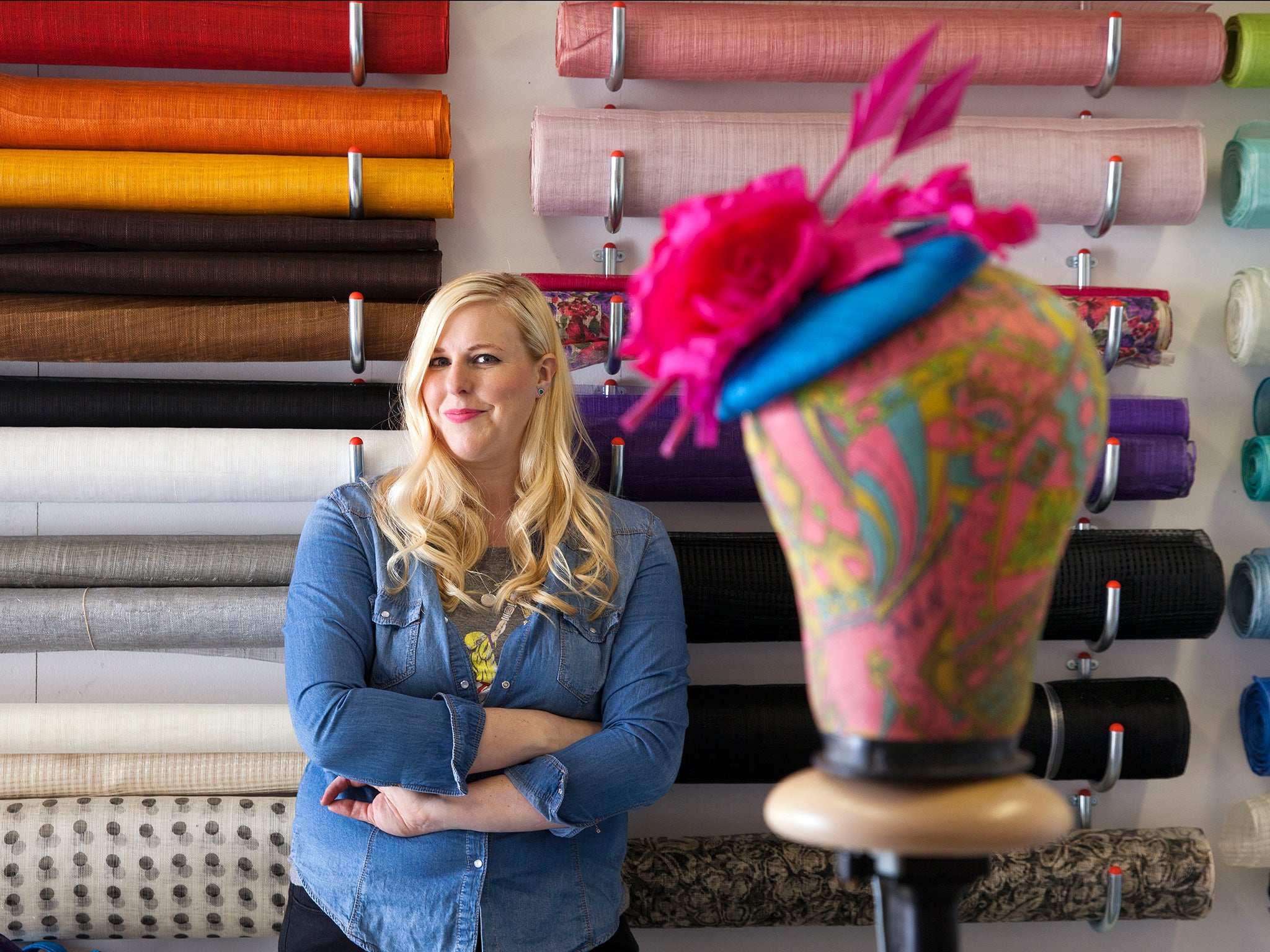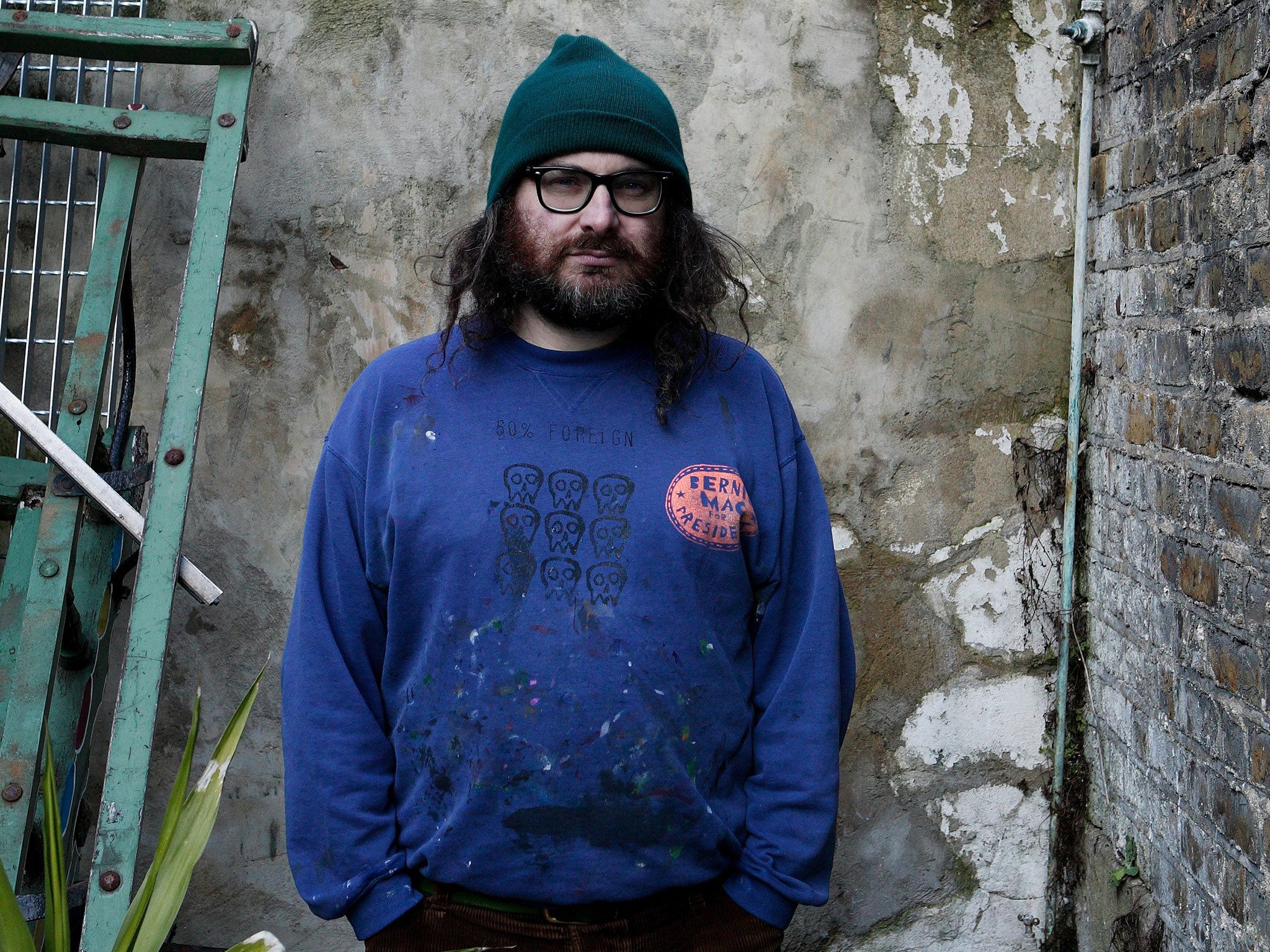How Etsy became a crafty little earner: The online market has been floated for £1.2bn, but can craft and capitalism coexist?
In 2005 Etsy was a fledgling online craft market with lofty ideals for empowering the little guy. Last week it was valued at £2 billion. So what do its sellers make of the mix of handmade and hard-nosed? Lena Corner talks shop with the traders

Earlier this month, Etsy, the online market place for handmade goods, launched on the New York stock market. In scenes reminiscent of the Facebook flotation three years ago, a crowd of Etsians, as they like to be called, gathered under the flickering Nasdaq screens and clapped and cheered as ticker tape wafted down over Times Square.
Lest anyone be caught up by the cold, hard figures – shares opened at $16 [£11] and closed at $30 by the end of the day – Etsy went out of its way to remind us of its core values of craftsmanship, authenticity and the homespun. The traditional Nasdaq bell-ringing ceremony was done using only vintage and handmade bells supplied by the site's own community of sellers. A group of Etsy shop owners, including Liz Carlis, who makes clocks out of used bicycle gears, and Anna and Juan Donado, who make wedding-cake toppers out of wooden pegs, were invited to set up a marketplace in Times Square to show the world how trade could be done. Meanwhile, the rest of the global Etsy community (1.4 million sellers, 19.8 million buyers) joined the revelry online using the #sellerbration hashtag.
Karli Dendy, who runs DesignosaurYEAH, a Brighton-based Etsy shop that sells Perspex jewellery, was one of a very select few who were flown to New York specially for the occasion. "It was really exciting. It all seemed to go so quickly," she says. "After the ceremony, and once we had toasted Etsy, Times Square turned into a sea of orange (the colour of its branding) with Etsy tote bags being printed in the middle of it all. Over the years it may have grown, but it hasn't lost that small business ethos where sellers are respected and listened to. You just don't find that on other e-commerce platforms."
Dendy is an example of someone who has picked up the Etsy ethos and run with it. She set up her shop on Etsy with her boyfriend Jacques Keogh in 2012 after they graduated with design degrees from the University of Sussex. "Our first pieces were dinosaur necklaces, hence our name," she says. "Once we listed them, we tweeted Etsy to tell them about our shop opening. When Etsy retweeted our tweet we suddenly had 10,000 views on the first day. We now run Designosaur full-time and I am team captain of more than 700 Etsy sellers based in and around Brighton." (To give an idea of the sheer range of items available on Etsy, go to the site's clean, simple homepage and type in "dinosaur". Including shops and products, vintage and craft items, there are 32,758 results. Try the same experiment with anything from antique lace to zebras and it's likely you'll emerge, hours later, from an Etsy wormhole of extraordinary things to buy.)
Dendy is exactly the kind of "creative entrepreneur" that Robert Kalin, Chris Maguire and Haim Schoppik had in mind when they founded Etsy a decade ago from their Brooklyn apartment. The original site was built in less than three months and the name picked because they wanted a random "nonsense" word. Their vision was to build a community where artisans could sell their own handmade products and in doing so create a new, fulfilling, forward-thinking way of doing commerce. Kalin, the company's original CEO, considered it to be more of a cultural movement. He saw himself as the living embodiment of the site and tried to fill his life entirely with handmade things. He pitched Etsy as the voice of integrity; the small, caring shop owner versus the might of faceless corporate retail.
It's not surprising, then, that many Etsy shop owners are evangelical about their site in a way that people selling on, say, eBay aren't. Although the business model is straightforward – an Etsy shop is free to set up and there's a fee of 12p per listing, plus 3.5 per cent commission on sales – it is this vocal, impassioned community behind it that gives the business its USP. Etsy forums are jammed with sellers sharing questions and helping each other: "Anyone else had a disappointing April?" they ask, or: "Please critique our recycled fabric garlands". They are – just as Kalin wished – voice, decision-makers and regulators of their site. To an extent.
By early 2007, Etsy passed 1.7 million sales and by November of that year, buyers had spent $4.3m on the site. In those early days, although sellers could trade all over the world, it was still seen very much as an American site because items were listed only in dollars. In August 2010, Etsy launched a game-changer. It introduced multiple currencies so that shoppers could browse and buy in their local currencies. The site had found its global following.
It is estimated that about 80 per cent of people – both selling and buying – on Etsy are female. Kate Smith's shop Jezebel Charms, which makes jewellery adorned with quotations from classical literature, is now one of the UK's biggest sellers on Etsy. She set up her store when both she and her husband were made redundant after the 2008 banking crisis. "My first and foremost motive was money to pay bills," she says. She started with £100 of materials bought on her credit card and has never looked back. Last year, Smith and her husband were finally able to buy a house with the proceeds, the whole of the top floor of which is given over to a studio for Smith. "My lifestyle is the best it has ever been," she says. "If I gave up Jezebel tomorrow I would never find a job that would pay the same."

Another example is Michelle Osborne, of Petershams Millinery Supplies. She started her London shop, which sources vintage hat-making supplies, in 2010. A year later, it had grown enough to enable her to leave her job as a visual merchandiser for Ikea. She hasn't had quite such a smooth ride, however, as just six months later she discovered she had Stage Two cervical cancer.
"I was, like, this is not good timing. I was newly self-employed so didn't get sick pay or anything," she says. "I would go for chemotherapy or radiotherapy, come home and literally start packing orders, crying at the same time. But I wanted it to work so badly that I forced myself to keep on going. I've been four years in remission now and haven't looked back. Every day is brilliant. I am doing what I love."
There are some, however, who are more dismissive of Etsy's sometimes less than polished offerings. When American actress April Winchell was between jobs in 2009, she set up a blog called Regretsy, which took great delight in pillaging Etsy for its "craftcidents". It was an immediate hit, filled with forums of people crying with laughter over the ill-advised "patchwork skirt pant" – basically trousers with a hole in the crotch – or the portrait of TV celebrity Dr Phil, listed for $1,000. The blog closed after three and a half years, when Winchell said that she felt there were "no more jokes to be made out of crafting".
While it's true that Etsy is now completely stuffed with vintage finds (which actually means anything more than 20 years old) and jewellery that you never knew existed ("worry rings with moving beads for when you are feeling nervous"), there are actually some really impressive things on there. UK sellers in particular have some good digital print and affordable art stores, and there are lots of lovely hand-knitted items that look as if they are being sold for less than the price of the wool. The wedding-supplies section (where everything from coat hangers to his-and-hers kimonos are customised) has also proved so successful that Etsy has responded by introducing its first ever wedding show in London next month.
The first member of Etsy staff was recruited in London in 2010 and now there is a team of about 30 who work from a swanky Clerkenwell office. Other Etsy headquarters were rolled out in Berlin, Dublin, Paris, Melbourne and across America. The number of listed items has hit the 29 million mark and last year gross sales reached $1.93bn.
But as the money poured in, there began to be a few grumblings from the old Etsy faithful. Questions started to be asked about the size of businesses and what actually constitutes handmade. Things came to a head in 2012 when Ecologica Malibu, a seller who made furniture from reclaimed wood, was accused of being little more than a distributor of products manufactured in Indonesia. An investigation followed and Etsy concluded that Ecologica Malibu was actually a collective which employed others to help with her operation. It was an issue that was debated hotly in the forums and some even closed their shops in protest. In the midst of it all Ecologica Malibu disappeared from the site but a can of worms had been opened.
I ask Jenny Gresham from Etsy's London office about the problem of listing items that don't comply to Etsy rules. "It happens all the time," she admits. "The team analyse it and make a decision about whether they can remain on the site or not." In 2013, Etsy finally resolved that it was time to change the rules. "It was decided that sellers can get outside manufacturing, but they still have to have an element of handmade," says Gresham. "That means it still has to have been designed or made by them. If they get outside manufacturing, they have to fill in a form and it's great if they have visited the factory. And it can't just be anywhere in the world, and I think the size of the factory comes into it, too. It's basically not mass-produced. There are various rules in the seller handbook."
Which all sounds a bit waffly to me – and not surprisingly, again, there was uproar on the forums, with people complaining that proper artisans were being overrun by mere suppliers. Still, Etsy had a point. What happens if there is a rush on, say, Oceana's hand-painted seashell earrings at Christmas? Is she allowed to get help in to fulfil orders? And if not, then surely Etsy is just stifling the ambitions of its own life blood.
Last week, most of the people on the Etsy forums seemed happy about the stock market flotation, although many have no real idea of what it actually means for their stores. "To me it's just another day in Etsyland," posted Emilie, who makes Americana-themed ornaments out of felt. Lynn Cobb, from San Francisco, who sells fine silver jewellery, however is furious.
"Etsy has left a lot of fine craft artisans in the dust on its way to the IPO. We have been replaced by 'trending' items that are often manufactured or are being re-sold from manufacturers – items easily found all over the internet or at the shopping centre. There is a feeling that Etsy turns a blind eye to sellers who are breaking the rules and that recent changes have been designed to make life easier for big sellers. The forums are filled with complaints and yet it seems as if Etsy doesn't listen."

But in fact, Chad Dickerson, the CEO, is listening. On flotation day he wrote on the Etsy blog, "We've grown, Etsy has become a touch point of debate for larger issues, including whether the human-centered craftsmanship that we exist to support is compatible with being a public company. We understand the concern, but reject the premise that there is a choice to make between the two. We don't believe that people and profit are mutually exclusive."
It would be interesting to hear what Kalin thinks of the Etsy flotation today. He left the company in 2008, to be replaced by Dickerson, who came from Yahoo. Kalin returned for a while in 2009 but was ultimately sacked in 2011. His Twitter biography says he's now building a mill and learning to farm in the Catskill Mountains. "He would not focus on what was best for sellers if it meant compromising his personal ideology," Matthew Stinchcomb, Etsy's vice president of branding and social responsibility, told Wired magazine.
Before he went in 2008, Kalin posted a video on the company's blog of him reading a book called Swimmy about a small fish that joins forces with other fish to scare away a big hungry tuna. "We do not want Etsy itself to be a big tuna fish," he wrote, "Those tuna are the big companies that all us small businesses are teaming up against."
As it gears up to celebrate its first 10 years in existence, Etsy has to be clear about what its take on big tuna fish is. It all depends if you believe that craft and capitalism can co-exist and, so far, it has proved that they can. But if a rift opens between the sellers and Etsy then it could go downhill pretty fast. Staff need to keep carefully monitoring those noisy forums that they created.
For Rob Ryan, who specialises in screen-printing and paper cutting, the whole debate is immaterial. He started an Etsy shop almost right back in the beginning. He now has his own bricks-and-mortar shop in London, with products licenced through John Lewis, and is a successful artist in his own right; yet he would never consider closing his Etsy store.
"I love the idea of sitting and making something in my studio and then selling it direct to my customers. I still sell something on Etsy every day," he says. "I went to the office in New York a while ago. I had lunch with 200 people, there's a great community there. It is a good company. It's got a good heart."
Join our commenting forum
Join thought-provoking conversations, follow other Independent readers and see their replies
Comments